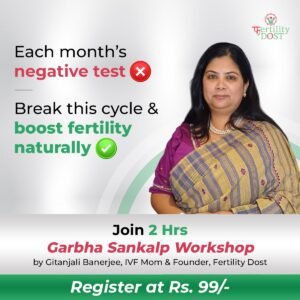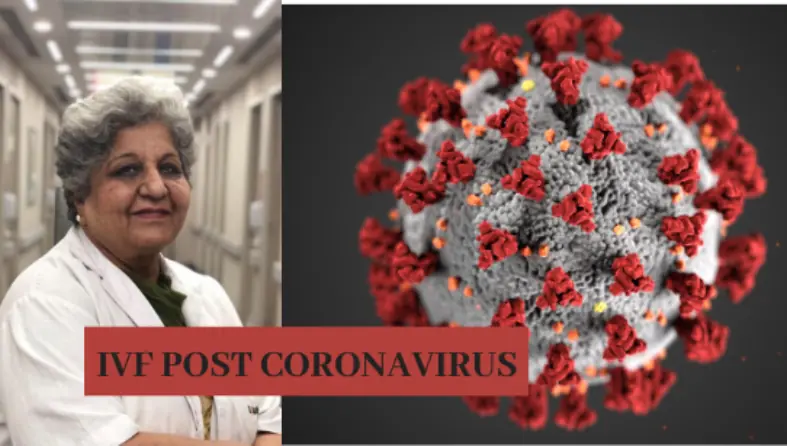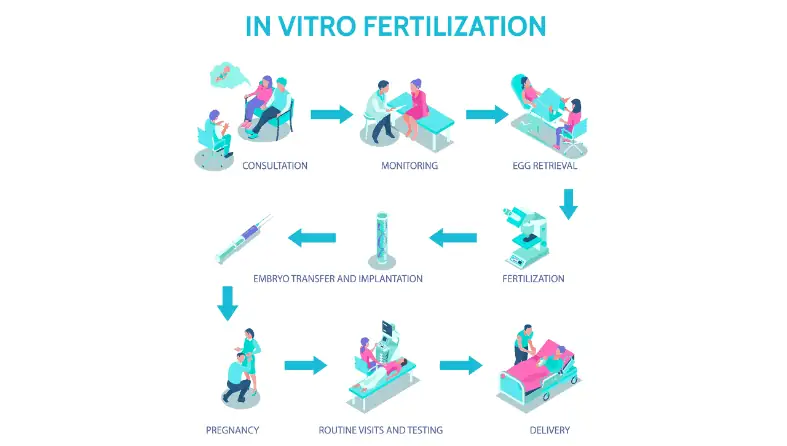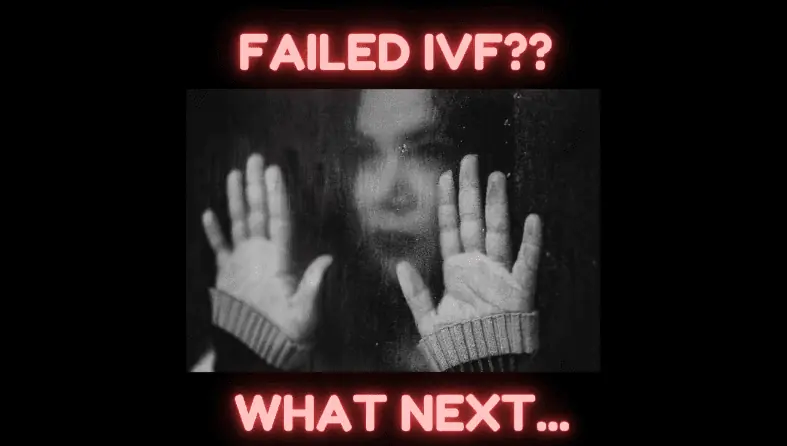Mini IVF: The Low Cost Miracle IVF
IVF, IVF Treatment
Have you ever wondered about what the best way to get medical assistance for pregnancy was that was closest to a natural pregnancy? Have you heard about mini IVF and wish to know about all the specifications and advantages? Dr. Nisha Bhatnagar, Aveya IVF answers all your questions on Mini-IVF, the advantages, the procedure, and success rates. Continue reading to know everything you should before considering a Mini-IVF procedure.
The Need For Artificial Procedures
Today, in times of technological breakthroughs and medical advancements the number of patients requiring IVF has also increased. For decades it has been believed that more hormonal treatment leads to a greater number of eggs retrieved thereby increasing the chances of successful fertilization. But the whole process is too expensive and essentially not that successful too, as in the last few years the successful outcome of IVF is defined as “achieving one healthy pregnancy that came from one good embryo”. Because of the cost factor too, the majority of the world’s population has no access to infertility treatment.
Other factors that need consideration are the effect of gonadotropins on egg quality and the choice of more advantageous preparations and stimulation regimen. Several studies have shown that it is the quality and not the quantity that affects the outcome. It has also been proven beyond doubt that the implantation potential of oocytes derived from the natural cycle is higher than that with conventional gonadotropin stimulation.
Keeping all these facts in mind, in recent years there has been an increasing interest in milder approaches to IVF and therefore the fertility treatment protocols have been revisited. The term Minimal Stimulation encompasses a variety of ovarian stimulation methods from a natural cycle in which no medication is used to stimulate the ovaries to Letrozole cycle in which a follicular stimulatory effect takes place presumptively to Clomiphene Citrate cycles where a definite ovarian stimulatory effect takes place and more than one follicle is usually formed. Furthermore, cycles, where a very minimal amount of gonadotropins are used in combination at lower than usual levels are also included in the Minimal Stimulation Protocol.
Choosing Mini IVF: Why?
In recent times we have come to identify that there is a wide range of fertility drugs and different stimulation protocols, which are not commonly used by the majority of infertility endocrinologists. Here only some examples are shown to open the mind of the interested reader for more detailed research in the literature.
The Working of Mini IVF

Natural cycle IVF is an IVF technique using the natural menstrual cycle of the patient without any ovarian stimulation. The very first IVF cycles in the late seventies and eighties were the natural cycle. One of the main disadvantages of natural cycle IVF is a high cancellation rate coz of premature ovulation. But there is a certain group of patients in which this is the most beneficial approach.
-
Natural cycle IVF in patients with poor ovarian reserve: till some time back the problem of the poor reserve was generally seen in advanced age patients but the situation has changed drastically in the last decade, and more so in the developing countries. The contributory factors may be the changes in lifestyle, increased stress levels, poor diet habits, and increasing pollution. These patients do not respond adequately to the traditional stimulation protocols using high doses of gonadotropins and here the main focus should be on oocyte quality rather than quantity.
-
The second group of patients that can be benefitted from natural cycle IVF is the ones who cannot afford the expensive regular protocols, where expensive medicine is used for stimulation. A comparison of the cost of NC- IVF and conventional IVF was done by Von wolf fetal.2014c and it was found that NC IVF is 15% less expensive with the same pregnancy rate but it takes on an average v30% longer to achieve the same pregnancy rate.
-
Another group of patients that can be benefitted is the ones who do not prefer to take high doses of injections or are very sensitive or allergic to drugs used.
Call Now To Book Your First Free Consultation Call Today!
Disadvantages of a Mini-IVF Procedure
The main disadvantages of natural cycle IVF are the high cancellation rate because of premature LH surge. It has been recently published that anti-oestrogenic drugs like clomiphene citrate and tamoxifen can be used to control LH surge in the modified natural cycle and minimal stimulation. This enables the endocrinologist to make the natural cycle IVF more convenient by controlling the LH surge and triggering accordingly. The protocol we use in our center is to start the patient combination of tamoxifen 20 mg and clomiphene 50 it is then continued till the follicle reaches a size of 18-19 mm and then triggered followed by ovum retrieval.
Minimal Stimulation has added advantage of not having the bad effect of too many follicles on the endometrium
Mini IVF- A Doctors Perspective
For reproductive endocrinologists, who are only familiar with the long GnRH agonist protocol, the new concepts presented in this chapter maybe a little bit more difficult to understand than for those who have already experimented with the short GnRH antagonist protocol. The most important reason for the popularity of the “Long Protocol” is its ease of application. The patient’s endocrinology is put on “autopilot mode” and she only has to stimulate her ovaries, without risk of LH surge or ovulation. Follicle growth is very predictable in time and the whole follicular cohort is growing together, which makes sure that most of the follicles have more or less the same size when maturity is attained.
On the other hand, little can be learned from the patient’s hormonal patterns and reactions, as those are completely down-regulated by the strong medication. If there is any variation to the normal response, either too much or too little, it is difficult to understand the endocrinological reasons behind it. In contrast to this, the “Short Antagonist Protocol” starts without any down-regulation at the beginning of the stimulation. GnRH antagonists are traditionally applied in the middle or at the end of the protocol, just to control LH surge and premature ovulation.
The curious reproductive endocrinologist, who is observing the hormonal patterns of his or her patient during ovarian stimulation without any GnRH agonist of antagonist suppression may notice that only a small percentage of the patients will develop a spontaneous LH surge under FSH stimulation. The better the ovarian reserve of the patient and the higher the FSH stimulation, the less likely is a spontaneous LH rise. Especially in young and healthy oocyte donors where estradiol levels can get high during ovarian stimulation, in most of the cases, LH levels will range between 0 – 2 IU/L at the end of stimulation, which makes the use of GnRH antagonists unnecessary.
We have observed that nearly exclusively patients with low ovarian reserve develop spontaneous LH surge at the end of ovarian stimulation. This would mean that all other patients do not require any GnRH agonist or antagonist treatment during their stimulation. To avoid any bad surprise, serum LH levels can be measured at the end of any ovarian stimulation. If an LH increase of 2 points can be observed, for example, a raise from 2 IU/L to 4 IU/L, it can be considered significant and a GnRH antagonist can still be given to prevent spontaneous ovulation. The simple measurement of serum LH at the end ovarian stimulation would help to save some money for the patient.
Success Stories A With Mini IVF

Case 1:
-
A young patient, 29 years of age, with a history of chlamydia and blocked fallopian tubes comes to our infertility consultation. She is otherwise healthy with regular menstrual cycles of 28/29 days. Her husband is 32 years old with normal sperm. A
-
vaginal ultrasound shows a good ovarian reserve in both ovaries and a normal uterus without any pathology. We decided that due to the blocked fallopian tubes, an IVF treatment would be the best option for them.
-
The patients decide to use a low stimulation protocol based on Letrozole and Tamoxifen, due to its cost-effectiveness and its patient friendliness with fewer side effects. Although it is perfectly possible to do the stimulation only with ultrasound scans and without any hormone analyses, we perform two hormone analyses for educational purposes on day 7 and day 10 of stimulation in this case.
-
As we usually work in batches, patients are programmed with contraceptive pills, which are given for a minimum of 10 days. They can be started either at the beginning of the cycle or any time during the luteal phase after ovulation has occurred. This particular patient starts her contraceptive pills on day 19 of the menstrual cycle and takes them for 12 days. We usually start ovarian stimulation on the fifth day after the last contraceptive pill. This particular patient takes five days of 5 mg Letrozole, together with 75 IU recombinant FSH, and then she continues the daily injections of 75 IU recombinant FSH together with 40 mg Tamoxifen from day 6 of stimulation, until the day of ovulation induction trigger.
-
On day 7 of her stimulation, the patient comes to the clinic for a vaginal ultrasound and hormonal blood test. Her endometrial lining is 6,7 mm triple-layer, in her right ovary she has two follicles of 14 mm, three follicles of 13 mm, and two follicles of 12 mm, the rest of the follicles is 10 mm or smaller. In her left ovary, there are two follicles of 14 mm, two follicles of 13mm, and one follicle of 12 mm. The rest of the follicles are small. Estradiol is only 63 pg/ml, because of the Letrozole treatment of 5 days, LH is 2,6 IU/ml and FSH is 12,3 IU/ml.
-
We ask her to come back two days later on day 10 of stimulation. Three days later her endometrial lining is 8,7mm triple-layer, in her right ovary, she has one follicle of 19 mm, one of 18 mm, and two of 16 mm. The rest is small. In her left ovary, she has two follicles of 18 mm, one of 17 mm and one of 16 mm.
-
The rest of the follicles are small. Estradiol is 1.263 pg/ml, LH is 1,6 IU/ml and FSH 8,9 IU/ml. We decide to trigger the following evening on day 11 if stimulation with 5.000 IU HCG. It is important to give Tamoxifen until the last day of stimulation to prevent an LH surge.
-
Thirty-six hours after the trigger, we retrieve six mature oocytes. All six oocytes fertilize after ICSI injection and on day 5, we have three expanded blastocysts. We perform a single embryo transfer with one blastocyst and vitrify the remaining two. Twelve days after the transfer, the patient is pregnant with an HCG value of 346 IU/ml.
Case 2:
-
A patient of 38 years with a history of spontaneous conception and live birth seven years ago comes to our clinic because she is looking for a second child. Her left ovary was removed around 10 years ago because of a teratoma. Otherwise, she is healthy, her fallopian tubes are patent and her husband’s sperm is normal.
-
Her menstrual cycle is regular, but her cycle length that has always been around 28/29 days has become shorter in the last two years and is now around 24/25 days. One year before, the couple has done IVF stimulation in another clinic with a long agonist protocol and 300 IU recombinant FSH per day, but the cycle was canceled because of low ovarian response.
-
A vaginal ultrasound on her third day of the cycle shows a dominant follicle of 14 mm together with three antral follicles below 10 mm in her remaining ovary. Her Estradiol is 71pg/ml, FSH 14,3 IU/ml and LH 6,5 IU/ml. The Patient’s ovarian reserve is reduced and her menstrual cycle is advanced with a dominant follicle already present on day 3 of the cycle.
-
We decide to do luteal phase stimulation and ask the patient to come back to the clinic for a blood test on her cycle day 15. On this day her Estradiol is 91 pg/ml, Progesterone 4,5 ng/ml, FSH 6,7 IU/ml and LH 8,1 IU/ml. Having confirmed ovulation through positive progesterone, we instruct the patient to start stimulation with daily injections of 150 IU recombinant FSH, starting from that same day.
-
We ask her to come back to the clinic for vaginal ultrasound and blood test after nine days of stimulation. We find two follicles of 17mm, two follicles of 16mm, and one follicle of 14mm in her right ovary. Her Estradiol is 1134 pg/ml, Progesterone 7,2 ng/ml, FSH 12,2 IU/ml and LH 4,3 IU/ml.
-
We decide to trigger her ovulation with 200 µg Buserelin nasal spray after two more days of stimulation. Oocyte retrieval is done thirty-six hours after the trigger and five mature oocytes are retrieved. All oocytes are injected through ICSI with her husband’s sperm.
-
On day 3, we find three grade A embryos and one grade C embryo. We agree with the couple to culture two more days to reach the blastocyst stage.
-
On day 5, we have two grade A blastocysts, which are frozen. In the next cycle, the endometrium is prepared in an artificial cycle using GnRH agonist down-regulation, oral estradiol valerate, and vaginal progesterone.
-
One blastocyst is transferred 120 hours after the beginning of vaginal progesterone. Twelve days after the transfer, the patient is pregnant with an HCG value of 476 IU/ml.
Scientific Advances In Mini IVF
In addition to recombinant and urinary FSH, GnRH agonists, and antagonists, there are several less well-known fertility drugs, which can be used for ovarian stimulation. Although still small in number, there are more and more reproductive endocrinologists around the world, who are using alternative stimulation protocols for their complicated patients or just to make ovarian stimulation more cost-effective. Some of the modified protocols used at our center are
1 clomifene plus tamoxifen = a very good protocol for minimal stimulation especially in cases where a fresh transfer is required for some reason. Stimulation is started from day 2 of the cycle with 50 mg of clomidfor days, and from the 6th day onwards tamoxifen is added in the dose of 20 mg two times a day till the follicle reaches a size of 18mm. Tamoxifen has a dual effect as it acts on the lining to improve the lining and also acts as an antagonist so that the total dose of antagonist required is low and the cycle is more
Are you concerned about finding the best doctors to perform mini-IVF? Do you want guidance through your mini IVF procedure? We at Fertility Dost are India’s most renowned fertility support platform offering a range of programs such as Yoga, Ayurveda, and emotional counseling to help you attain your dream of starting a family. We will help you connect to the best doctors across India and guide you through the procedure, through every step.
About The Author
 Dr. Nisha Bhatnagar
Dr. Nisha Bhatnagar
Dr. Nisha Bhatnagar is the medical director and SR IVF consultant at Aveya IVF & Fertility Center. She has done her post graduation (M.D. Obs & Gynae) from G.M.C. Aurangabad (B.R.A.M. University, Maharashtra). She is an experienced Obstetrician & Gynecologist with over 20 years of experience in the discipline. She specialises in low and no-drug infertility solutions that help women conceive with minimal invasiveness and unparalleled success. She offers holistic approaches to IVF, including innovative treatments like Natural Cycle IVF, Minimal Stimulation IVF and Injection-Free IVF.






Your Comment Is Valuable For Us
Thanks For Your Feedback.